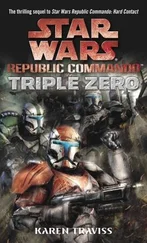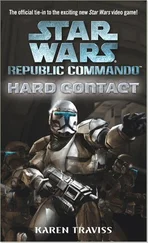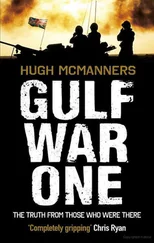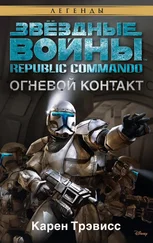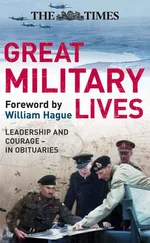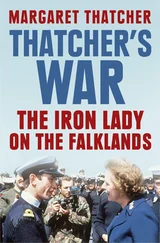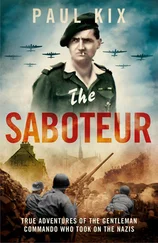Hugh McManners - Falklands Commando
Здесь есть возможность читать онлайн «Hugh McManners - Falklands Commando» весь текст электронной книги совершенно бесплатно (целиком полную версию без сокращений). В некоторых случаях можно слушать аудио, скачать через торрент в формате fb2 и присутствует краткое содержание. Город: London, Год выпуска: 2014, ISBN: 2014, Издательство: Nightstrike Publishing, Жанр: nonf_military, Биографии и Мемуары, на английском языке. Описание произведения, (предисловие) а так же отзывы посетителей доступны на портале библиотеки ЛибКат.
- Название:Falklands Commando
- Автор:
- Издательство:Nightstrike Publishing
- Жанр:
- Год:2014
- Город:London
- ISBN:978-0-992-81540-0
- Рейтинг книги:4 / 5. Голосов: 1
-
Избранное:Добавить в избранное
- Отзывы:
-
Ваша оценка:
- 80
- 1
- 2
- 3
- 4
- 5
Falklands Commando: краткое содержание, описание и аннотация
Предлагаем к чтению аннотацию, описание, краткое содержание или предисловие (зависит от того, что написал сам автор книги «Falklands Commando»). Если вы не нашли необходимую информацию о книге — напишите в комментариях, мы постараемся отыскать её.
Falklands Commando — читать онлайн бесплатно полную книгу (весь текст) целиком
Ниже представлен текст книги, разбитый по страницам. Система сохранения места последней прочитанной страницы, позволяет с удобством читать онлайн бесплатно книгу «Falklands Commando», без необходимости каждый раз заново искать на чём Вы остановились. Поставьте закладку, и сможете в любой момент перейти на страницу, на которой закончили чтение.
Интервал:
Закладка:
Already the time at sea was affecting our ability to fight. The tropical heat without showers or running water was increasingly uncomfortable. The wardroom bar, directly below the flight deck and ship’s funnel, both of which were baked by the sun during the day, got particularly hot. The Captain, a man with a good sense of humour who loved being one of the boys rather than the isolated man at the top, ‘discovered’ that hot air rises and that the coolest place in the wardroom was sitting on the floor. So every night the officers lay on the wardroom floor, raising their heads every now and then to sip beer. Scrabble ceased because sweat made the pieces too slippery to pick up, and the floor was too crowded with reclining bodies to lay the board out. It was not easy to sleep at night, more especially as the helicopter flight deck of Sir Percivale was just above our cabin, and every night they practised flying take-offs and landings from the completely darkened ship.
Every morning we gathered on the stern deck, leaning on the huge capstans that hauled in the greasy chains that lifted and lowered the rear ramp and cargo-loading entrance. In the fresh, salt air the white wake churned endlessly, dead straight when an experienced helmsman was on watch, or dog-legged when the boy was being taught. The sky was china blue and featureless.
The fleet was spread over a huge area in case of air attack. We merchant ships were surrounded by a ‘wagon wheel’ of unmarked warships which moved individually in a predetermined pattern around the wheel, to the eternal confusion of our helicopter pilots who were trying to land people on specific ships. Some mornings no ships at all were visible. A few days sailing out of Ascension, they all accelerated ahead, leaving the slow Sir Percivale plodding along with our ever-faithful escort HMS Antelope .
Antelope was a Type 21 frigate, particularly significant to us as it was equipped with a 4.5 inch Mark 8 gun. There were two sorts of naval gun that we were to control on Operation Corporate: the modern computerised, automated Mark 8’s, and the older, slower, slightly shorter range but in some ways more reliable Mark 6’s.
The job of our five-man 148 Battery teams was to infiltrate ashore and observe Argentine targets, whether from a mountain hideout, a concealed hole in a bog, walking forward with attacking infantry, or from a boat offshore or a helicopter. Despite the danger of this, our aim was to get to the best places from which to direct the naval gunfire to exactly where it would do most damage.
We carried the full range of military radios – HF, VHF and UHF, so we could communicate with the various military HQs and units and aircraft, as well as to the ships. We transmitted the co-ordinates of the targets we discovered ashore to the ship, along with precise orders as to the type of ammunition she was to fire, how much and when. We controlled where the shells landed, moved them round and switched fire to other targets. Controlling the fire, and for the ships to fire shells accurately whilst rolling around with the swell in pitch darkness, requires a lot of practice.
Antelope ’ s crew were keen for us all to get together to run through procedures, and if possible fire their gun whilst we were still at Ascension. As a joining-up of the forces by which we’d take the fight to the enemy this was a meaningful and positive moment. It was also very enjoyable. We were received with great hospitality, enjoying their air conditioning, showers and the change of scene.
The captain and his ops room crew hadn’t yet seen any ground maps of the Falklands. Their nautical charts showed only the outline of the coast and a few features like hills visible from the sea. I sent through my huge pack of 1:50,000 OS maps, plus the larger scale air control maps I’d obtained, using them to discuss everything I’d learned about the Islands.
We then spent a morning putting them through firing drills and talking about the type of land targets we thought we might attack. Their surgeon John Ramage, a friend who’d been the Medical Officer at Royal Marines Poole, installed me in his empty sickbay, the only spare bed on board.
The next morning Antelope’s Lynx helicopter delivered us back to Sir Percivale . Nick and the boys had been presented with large, brown-paper sacks which they kept clutched to their chests. We were winched down individually, Sir Percivale’s flight deck being too small for the Lynx to land. I went last, and the flight crew lowered me playfully until my feet trailed in the sea. The pilot then flew along from the bow along the length of Sir Percival towards the stern, and reeled me back up in time to land with soggy feet on the deck.
The brown-paper sacks were full of chilled beer cans and dubious magazines, donated by Antelope’s matelots, who were touched by tales of our deprivation. We put the beer in Sir Percivale’s meat store to stay cold for a special celebration when we reached Ascension.
On 16 April the Oily Rag informed us that the Argentine navy, with their carrier the Veinticinco de Mayo had put to sea “as a defensive measure”. Mr Haig had again been to Buenos Aires, and President Reagan had spoken to the Argentine President General Galtieri. The Russians, after revelations of their supplying the Argentinians with information about the Task Force, reposted accusing the US of “acting in collusion with a colonial power and supplying intelligence material”. The Common Market ban on Argentinean goods was applied, initially for one month, to affect some 25% of her exports.
In the rest of the world, tension and violence continued in Beirut, China was unhappy with the US over the supply of goods to Taiwan, recent arms finds in Zimbabwe led to some desertions from the army there, HM The Queen was formally to proclaim a new Canadian constitution in Ottawa, and Bjorn Borg would not play at either Wimbledon or Paris this year.
In that same issue of the Oily Rag I reported our visit to HMS Antelope . I’d heard of ships throwing non-vital furniture overboard, so I invented an orgy of destruction on Antelope :
“Yesterday I went across to HMS Antelope , the Type 21 frigate that is looking after us. These boys have got one or two problems, which I will try to explain. There seems to be something wrong with the victualling system, which has resulted in there being no water and stacks of beer. This means everyone is on the piss and no one is washing.
Whilst I was on board I overheard the First Lieutenant discussing their programme. Apparently when RN ships enter hostile areas they go into what they call ‘Defence Watches’. This involves no one being allowed any sleep, everyone eating ham sandwiches and drinking mugs of cocoa, carrying a penknife with them at all times, and throwing all the fittings over the side! Well, can this be true? I investigated and it was.
They start traditionally, with the wardroom carpet and pictures, then the antelope’s head followed by the wall plaques. The chief petty officers’ mess beer-cooler is last of all.
‘Sorry Captain, sir, if you could just stand up a second. Right, Leading Radio Operator, chuck that chair over the rail. You didn’t want these photos of the wife and kids did you sir?’
When eventually this orgy of destruction is over (it includes shaving off hair, and beards if worn) the ship’s officers put on their best uniforms and go to Divisions (this is a parade of the whole company). On Divisions everyone helps each other to rip the pockets and buttons off their best uniforms and jump up and down on their hats. Finally the captain, head completely shaven, has a handful of shit rubbed on his bald pate by the Master of Arms and snaps his telescope in two over his knee.
Читать дальшеИнтервал:
Закладка:
Похожие книги на «Falklands Commando»
Представляем Вашему вниманию похожие книги на «Falklands Commando» списком для выбора. Мы отобрали схожую по названию и смыслу литературу в надежде предоставить читателям больше вариантов отыскать новые, интересные, ещё непрочитанные произведения.
Обсуждение, отзывы о книге «Falklands Commando» и просто собственные мнения читателей. Оставьте ваши комментарии, напишите, что Вы думаете о произведении, его смысле или главных героях. Укажите что конкретно понравилось, а что нет, и почему Вы так считаете.

